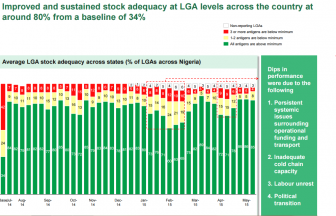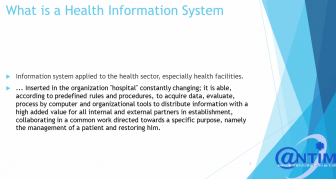Jul 29, 2015
Impact of Health Systems Strengthening on Health
From USAID, this report, based on a review of systematic reviews of the effects on health of HSS, presents a significant body of evidence linking HSS interventions to measureable impact on health for vulnerable people in LMICs. Making decisions on who delivers health services and where and how these services are organized is important to achieve priority health goals such as EPCMD, AFG, and PCID. The findings of this report document the value of investing in HSS.Jun 22, 2015
Roadmap for Health Measurement and Accountability
The Roadmap articulates a shared strategic approach to support effective measurement and accountability systems for a country’s health programs. The Roadmap outlines smart investments that countries can adopt to strengthen basic measurement systems and to align partners and donors around common priorities. It offers a platform for development partners, technical experts, implementers, civil society organizations, and decision makers to work together for health measurement in the post-2015 era.
Jun 19, 2015
Webinar: Building real-time LMIS for the vaccine supply chain in Nigeria
eHealth, Stock Management, Supply Chain, Tools
Nigeria
The Better Immunization Data Learning Network (BLN) recently held a webinar entitled “Building real-time LMIS for the vaccine supply chain in Nigeria”. This webinar focused on building an LMIS for vaccine supply in Nigeria with an aim to acquiring a simple but impactful system. The speakers shared the stepwise approach they undertook and how they redesigned their system, adopting automation where it made sense. They discussed the challenges they faced, how they addressed them and the important lessons they have learned in the process of implementation.
Apr 30, 2015
Saving Lives by Improving Global Immunization
Vaccines are one of the most effective public health interventions of all time—especially in developing countries,where many families cannot find or afford health care when their children get sick.Apr 23, 2015
BID Initiative April 2014 – March 2015 Annual Report
April 2015 marked the end of year two for the BID Initiative and our March 2014 - April 2015 Annual Report is now available! We are fully staffed in both demonstration countries with intervention testing taking place in Zambia and implementation starting in Tanzania. Please take a moment to read our year two annual report for updates on our progress and what we are looking forward to in year three!Apr 2, 2015
Benchmarking health system performance across districts in Zambia: a systematic analysis of levels and trends in key maternal and child health interventions from 1990 to 2010
Monitoring & Evaluation, Practices, Standards, Tools, USAID
Zambia

Feb 12, 2015
BLN Webinar: Successful Implementation of a Health Information Software
The Better Immunization Data Learning Network (BLN) recently held a webinar entitled Successful implementation of a Health information Software. In this webinar, the speakers shared Mali’ experience implementing health information software. The presentation took the audience through: the software identification process, including identifying and involving stakeholders and effective communication; key implementation steps; and software deployment and related activities.
Aug 27, 2012
Nigeria Immunization Fact Sheet
EPI Plan, Tools, USAID
Nigeria
Download File: vnd.openxmlformats-officedocument.wordprocessingml.document (3.9 MB)
Feb 5, 2015
The BID Learning Network Grant Program
The BID Learning Network is structured with a small grant program to facilitate the advancement of Design country specific goals that are aligned with the BID Initiative priorities. The objective of the program ties into the overall goals of the BLN, including to experiment with projects in countries to determine their applicability; and then use this experience to inform national and global decision-making.
Read the full guidelines in how propospective applicants from Design countries can access these funds in the Grant Program section.
Aug 21, 2012
Liberia Routine Immunization Overview
The DHS conducted in 2007 pointed to coverage rates in Liberia that were significantly lower than official country reports. Despite an increasing trend between 2004 and 2009, WHO/UNICEF estimates illustrate a sharp decrease in coverage over the last two years. In 2011, Liberia’s immunization program failed to reach 39% (or 56,160) of its target population of children under one year of age with even a first dose of the DTP vaccine. Twelve percent of the children who began the DTP vaccination series did not complete it (drop out rate between DTP1 and DTP3), as shown in the graph below. Drop-out rates that are higher than 10% typically indicate problems with how immunization services are being delivered, perceived (e.g. friendly and reliable services) and used. The population’s use of routine immunization services is determined by the availability of, access to, demand for, and acceptance of those services.Download File: vnd.openxmlformats-officedocument.wordprocessingml.document (4.2 MB)
Jump in. Expand your knowledge.
Events
No upcoming events.
